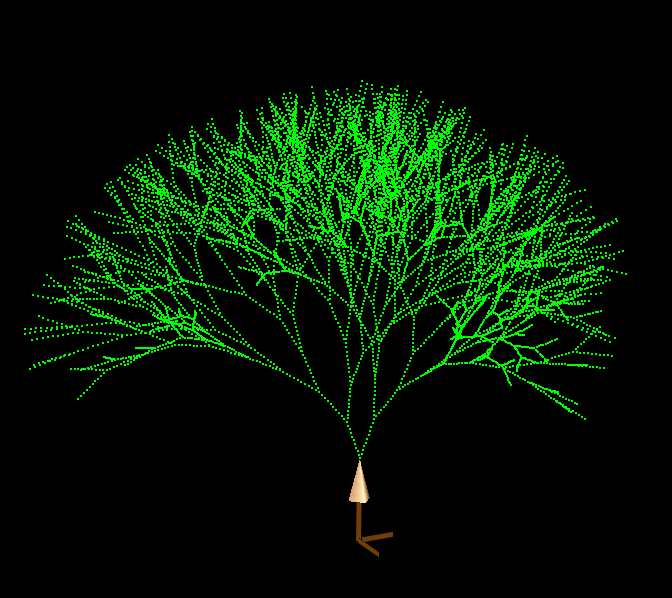 (a)
(a)
 (b)
(b)Definition of structural hierarchy:
Nature often creates complex structures through a hierarchy of structural features. For example a forest is composed of cells forming leaves and branches that compose limbs and finally a tree and on a larger scale the forest. To understand a forest we consider all levels-of-structure from cells to the composite forest. It is important to understand how levels of structure interact across levels, for example how cells group to form a tissue or topologically how particles bond to form an aggregate. A structural level is easy to define as a discrete and identifiable substructural component with an identifiable size-scale. Often one can consider a rule or growth law that is applied repeatedly to construct the next level of structure. For example a branching rule is applied to twigs to produce a tree. The concept of structural hierarchy in materials developed simultaneously in several distinct fields, particularly, structural biology, polymer science, and fractal science for ceramic and organic aggregates.
 (a)
(a)
 (b)
(b)
Figure 1. a) Ramified structure of a tree composed of twigs (primary level of structure) and a branching rule that leads to the tree (secondary level of structure). b) A simple branching algorithm that mimicks a tree.
Hierarchy in structure is often associated with mechanisms for formation and a hierarchical view allows an understanding of complex structural formation through simpler rules and laws. The mechanism of formation can be associated with thermodynamic balance, such as in polymer coils in solution, a combination of kinetics and thermodynamics such as involved in protein folding and in polymer crystal structure or a completely kinetically determined growth law such as in fractal aggregates. In all cases, the hierarchical signature directly reflects the developmental pathway that has lead to a particular complex morphology.
Considering hierarchical materials as a class allows for a general understanding of parallels between seemingly divergent fields such as protein folding and formation of cosmic dust fractal aggregates. It is hoped that through recognition of similarities that advances can be made in understanding the generalities of the accommodations made through structural hierarchy in the adaptation of materials to their environment.
The course will span 10 weeks divided into four subjects where
hierarchical view of structure is appropriate, each reflecting a different
meaning to hierarchy:
1) Protein Structure 2 weeks
2) Polymer Chain Structure and Dynamics 3 weeks
3) Polymer Crystalline Structure from a Hierarchical perspective 2 weeks
4) Branched Fractal Aggregates 2 weeks
-Grading will be based on a weekly quiz (Friday's 1/2 hour) 9 grades
-A mandatory, comprehensive final 3 quizes
-Reports to be posted on the web page dealing with hierarchical structure in
areas not covered in the course. The reports will involve application of
the hierarchical concept so will involve synthesis on the part of the student.
References should include several books as well as papers and internet
resources. Depending on the length and complexity of the report it will be
used to replace between 1 and 4 quiz grades. Students will propose the
number of quiz grades they intend the report to replace.